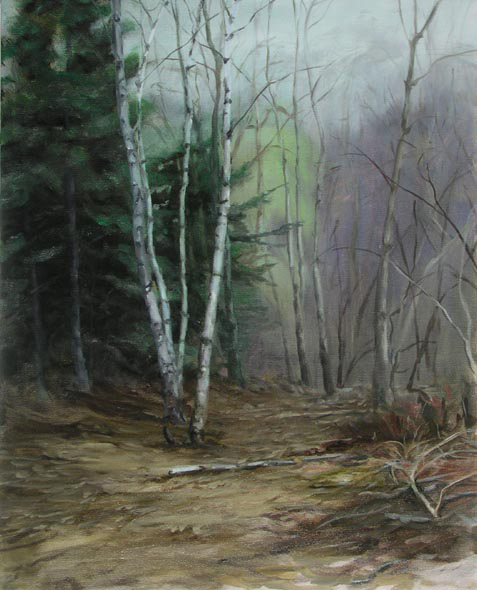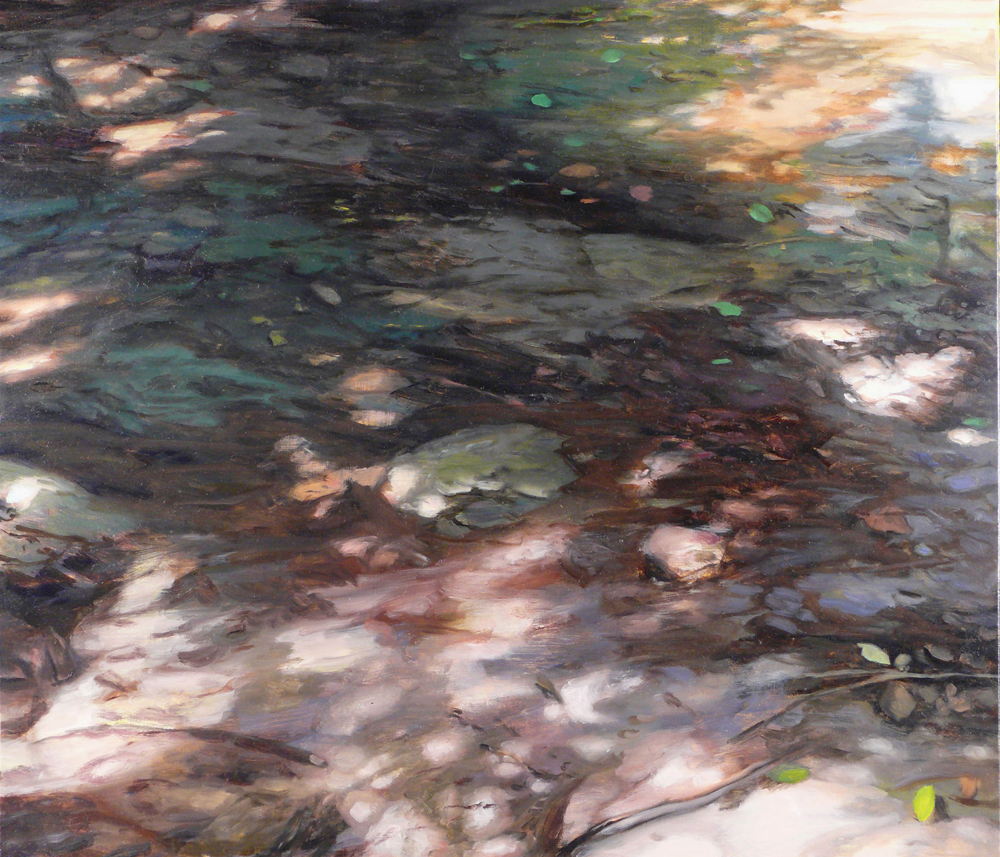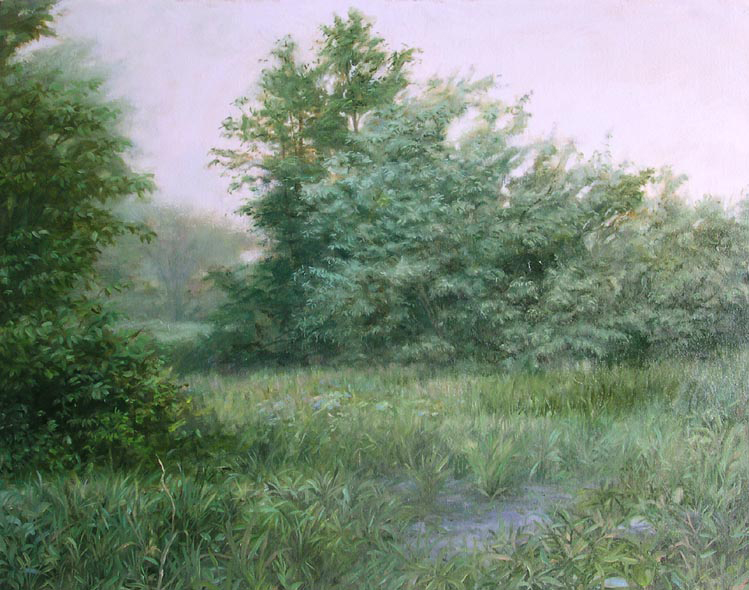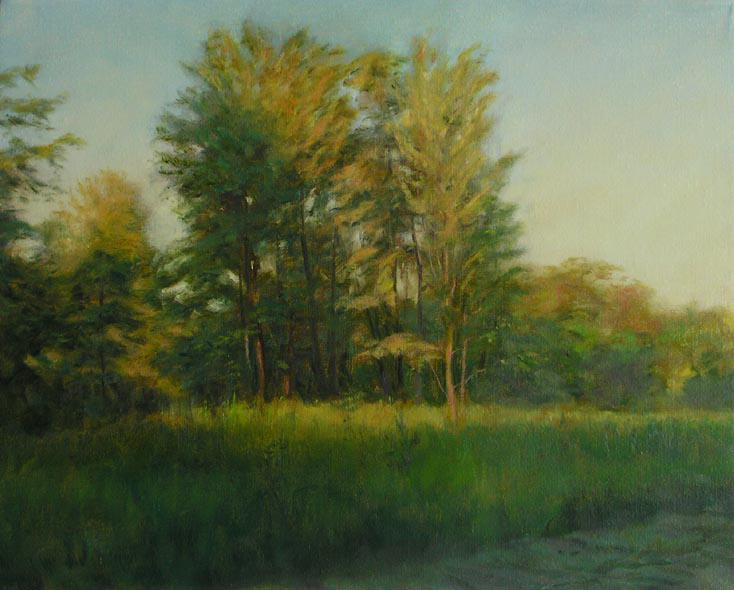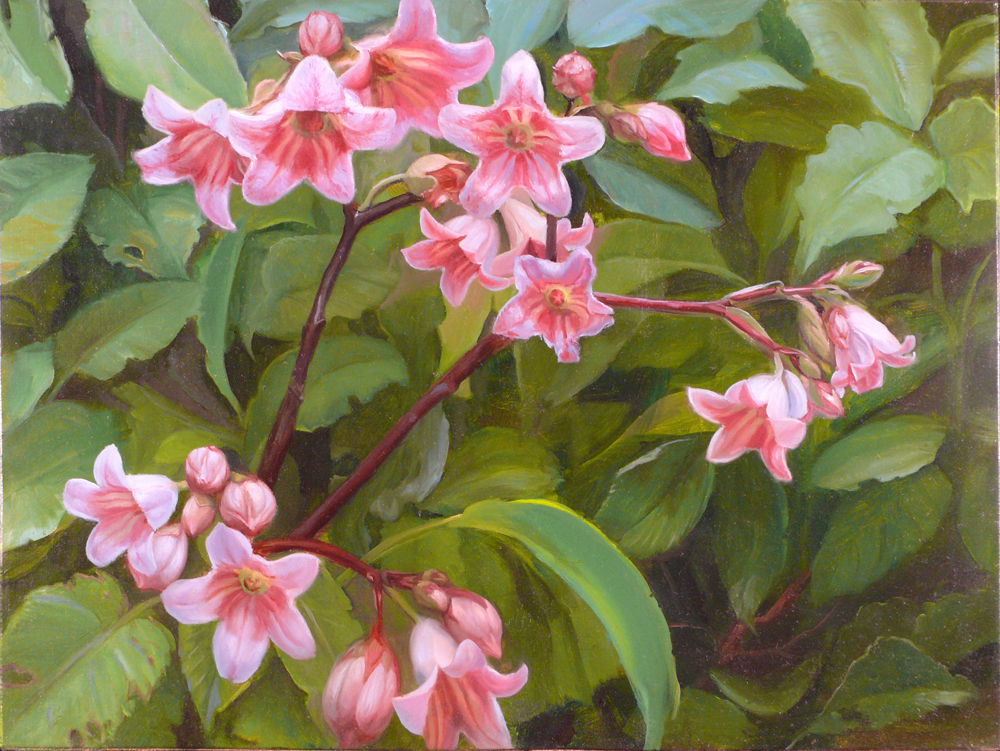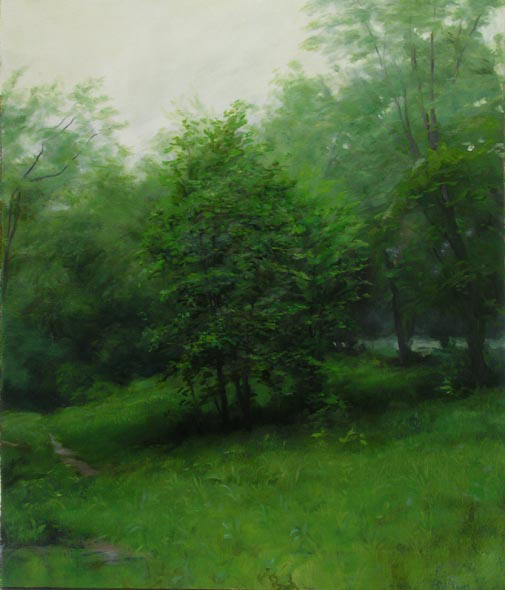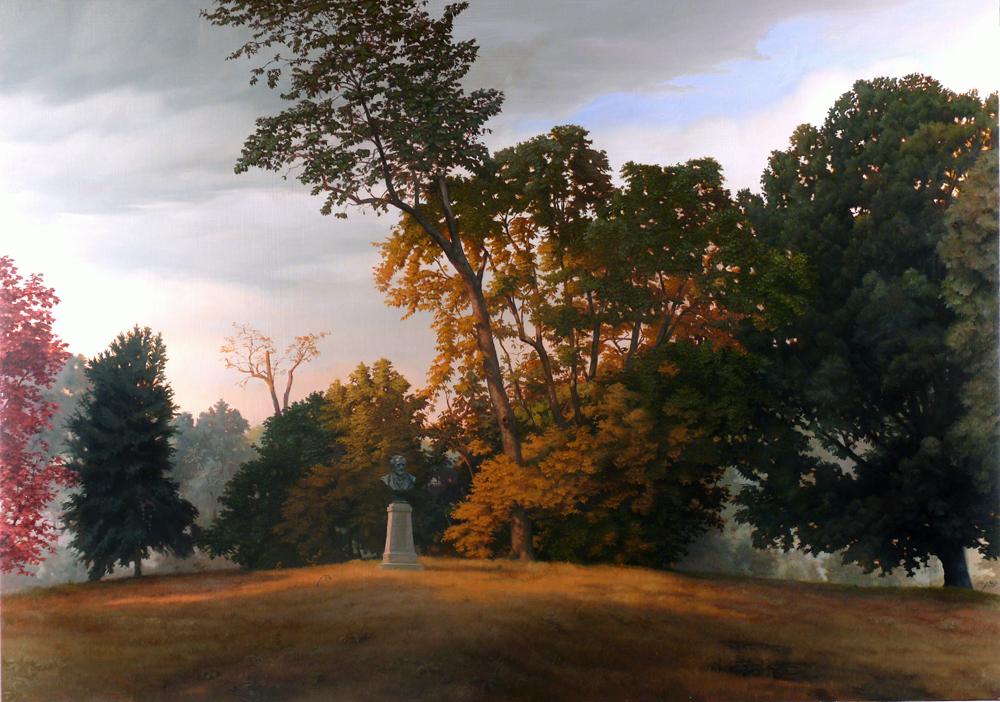These landscape paintings fall into two basic types. There are those that are primarily focused on documenting the world around me. The other type involves inventing imaginary places in the studio.
The documentary pieces vary from vast spaces to intimate bits of nature that almost become still life paintings. Making these is a way to sharpen perceptual and technical skills, as well as an opportunity to take a close look at things as they appear. They aren't conceptually oriented, and I would have a hard time defending their existence intellectually, but they are usually fun to work on. It is probably obvious that I have a greater affinity for organic form as opposed to architectural form, as there is little evidence of the built environment in most of these.
The second type of landscape paintings are those that are largely derived from imagination. The two types may look similar but they come from opposite directions. One is about looking very carefully, the other about making a mark, adding something, moving something until a coherent image emerges. One way to illustrate this would be to compare a painting by George Inness (Inwardly focused) to John Frederick Kensett (outwardly oriented). Or if you prefer an analogy from this century, Cindy Sherman (inward) to Barbara Kruger (outward). I have never been able to choose between them, so I oscillate between the two, which I am sure is true for all of the aforementioned artists, but I hope you understand my point.
The Wagner Monument 2007 is from Baltimore's Druid Hill Park, was painted for "Front Room; Notes on Monumentality" at the Baltimore Museum of Art, curated by Mark Alice Durant.














